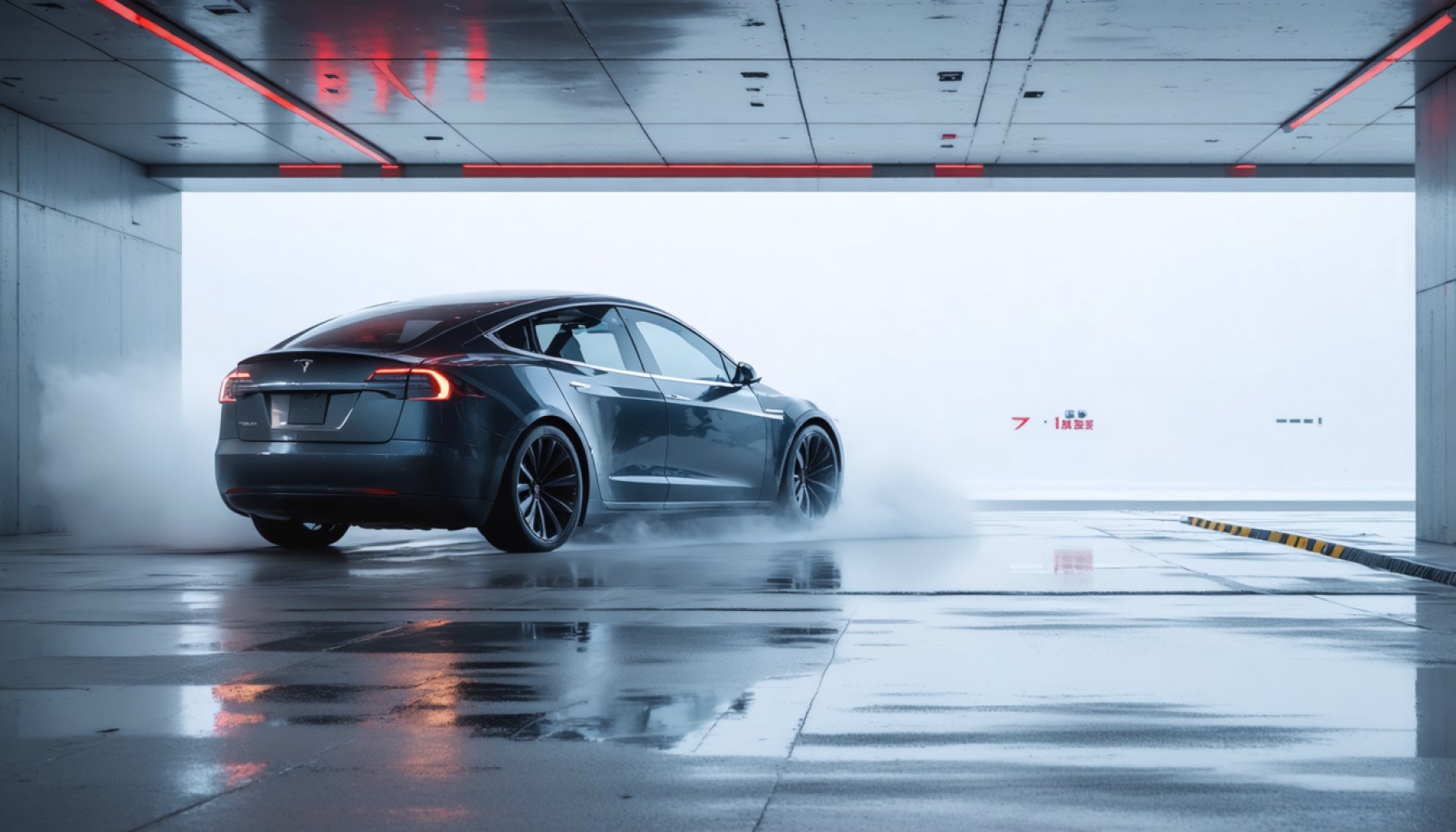- David Lau, former VP of software engineering, departs Tesla after over a decade, marking a substantial leadership change.
- Lau contributed significantly to Tesla’s digital growth, focusing on software-driven automotive innovation and seamless user experiences.
- His leadership fostered an environment ripe for innovation, integrating intricate vehicle controls with cloud services for optimized manufacturing.
- Tesla now faces a pivotal moment to leverage its talent for future innovations in autonomy and renewable energy.
- Tesla’s challenge is to maintain its pioneering status and momentum in software development amid the competitive automotive landscape.
- The change underscores the ongoing evolution in automotive technology, with potential for fresh leadership and transformative ideas.
A seismic shift is underway at Tesla as David Lau, a towering figure in the realm of software engineering, departs after over a decade with the pioneering automaker. As vice president of software engineering since 2017, Lau was not just steering coding teams but also shaping Tesla’s vision of a digitally-driven automotive future. His departure signals more than a leadership change—it prods us to ponder the direction Tesla will take as it navigates the ever-evolving landscape of electric vehicles and software-driven technologies.
Lau’s tenure at Tesla saw extraordinary transformations. Under his guidance, the software ecosystem blossomed, integrating intricate vehicle controls with cloud services and optimizing manufacturing efficiency. The seamless user experience that Tesla owners rave about—automated driving updates, smart connectivity, and an ever-evolving dashboard interface—stem from the groundwork laid by Lau and his team.
The man behind the screens delivered more than just code; he fostered an environment where innovation thrived. It is not just the stylish exteriors or powerful motors that captivate Tesla’s audience, but the intelligence inside—software that learns and adapts, offering a vision of what vehicles can truly be.
Tesla’s continued success hinges on leveraging its deep pool of talent to carry forward the torch of innovation. The vacuum left by Lau presents an opportunity for fresh leadership and new ideas that align with evolving consumer expectations and technological frontiers.
What’s at stake is Tesla’s role as a leader in the automotive revolution. Its ability to maintain momentum in software development while exploring new terrains such as full autonomy and renewable energy integration will define whether it remains a trailblazer or becomes just another player in the crowded market.
In the world of cutting-edge technology, change is the only constant. David Lau may have stepped down, but his legacy serves as a reminder of the relentless pursuit of greatness. As customers and industry observers watch closely, the future promises to be a thrilling ride fueled by innovation and vision, hallmarks of Tesla’s journey forward.
New Era for Tesla: What David Lau’s Departure Means for the Future of Automotive Innovation
Introduction
David Lau’s departure from Tesla marks a potential turning point for the company, sparking curiosity and speculation about its trajectory in the rapidly evolving fields of software development and electric vehicles. While his leadership was instrumental in Tesla’s pioneering software ecosystem, his exit propels us to consider the future of Tesla’s innovation capabilities and market leadership.
Understanding David Lau’s Impact
During his tenure, Lau was central to several notable advancements:
1. Over-the-Air Updates: Lau championed a system allowing vehicles to receive seamless software updates without visiting a service center, keeping Tesla cars at the cutting edge of technology.
2. Autonomous Capabilities: He played a vital role in developing Tesla’s autonomous driving technologies, laying the groundwork for full self-driving (FSD) capabilities.
3. User Experience: Under Lau’s watch, the Tesla interface became more intuitive, ensuring that users benefit from a seamless integration of software and hardware.
4. Cloud Integration: Lau spearheaded projects that interconnected vehicle software with cloud services, enabling features such as remote diagnostics and real-time performance monitoring.
The Future of Tesla’s Innovation
With Lau’s departure, several emerging trends and challenges will shape Tesla’s path:
– Emphasis on Full-Self Driving (FSD): Tesla will need to accelerate its FSD efforts, a key differentiator in the EV market. Competitors like Waymo and traditional automakers are swiftly advancing similar technologies.
– Integration of Renewable Energy: As part of Tesla’s holistic approach, integrating vehicles with solar and home energy solutions could see significant development, promoting sustainability.
– Navigating Regulatory Hurdles: Tesla must align its innovations with ever-changing global regulations surrounding safety and emissions, especially with software-controlled features.
– Exploration of AI and Machine Learning: Enhanced AI capabilities could bolster Tesla’s automobile intelligence, improving user personalization and driving efficiencies.
Potential Market Trends
The global electric vehicle market continues to expand, with expectations to exceed $1 trillion by 2028 (according to Fortune Business Insights). Tesla must maintain its innovation lead amidst increasing competition from both startups and established manufacturers venturing into the EV space.
Actionable Recommendations
1. Invest in Talent: Tesla should attract top talent in AI and software engineering to ensure continuity in innovation following Lau’s departure.
2. Focus on Consumer Experience: Continuous improvements in user interface and customer support can reinforce brand loyalty.
3. Expand Partnerships: Collaborating with tech giants and startups could enhance Tesla’s technological capabilities and expedite software advancements.
4. Enhance Security Measures: With increased digitalization, ensuring robust cybersecurity measures is critical to protecting customer data and maintaining trust.
Conclusion
David Lau’s legacy at Tesla is one of groundbreaking innovation and leadership. As Tesla moves forward, maintaining its competitive edge through technological emphasis and visionary leadership will be crucial. Consumers and investors alike will keep a close watch on Tesla’s strategic direction post-Lau.
For more insights on Tesla and its innovations, visit the official Tesla website.
